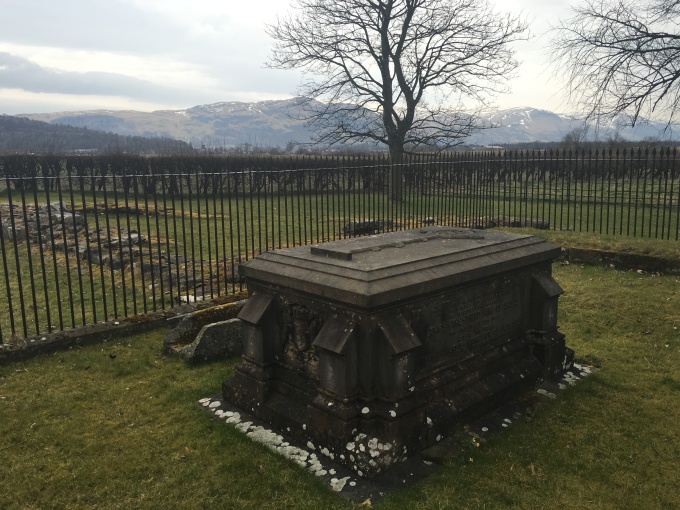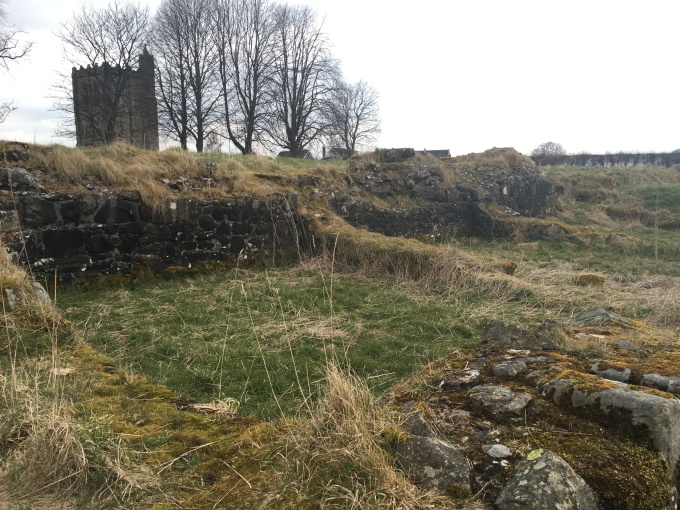Hello, everybody! Long time no see! I am aware that I have been absent from posting for quite a while, and I will fully explain why that is:
First off, I have done pretty much everything there is to do within a 20 mile radius of Stirling. Second, I am saving my budget for hiking trips (which is a large majority of why I came to Scotland in the first place), so I haven’t been indulging in further-out trips. Third, and most importantly, the weather has been abysmal. It’s as if nature knew I was coming and decided to throw everything at me. According to weather channels and professors, this is the worst winter Scotland has had in over a decade. The Stirling area hasn’t had any snow for three years, yet it snowed four days ago, on April 2nd. The La Niña effect, which only happens every two to seven years, is also going on this year, making it colder. And, as if that wasn’t enough, the polar vortex split a couple of months ago, causing even more prolonged cold. So, long story short, it’s literally the perfect winter. All of these factors have put quite a large dent in my hiking plans.
That being said, I finally did something new today! I visited the ruins of Cambuskenneth Abbey just outside of Stirling. They’ve been there this whole time, but they didn’t open to the public until last Sunday.

I walked to the ruins, which took about an hour. I hooked a left past the Wallace Monument and then a right onto a road which cut through farmland along the Forth River. It was cloudy today but still clear and relatively warm. Not bad considering all the weather I outlined earlier!

After an hour of walking, I went through the small yet charming village of Cambuskenneth and approached the ruins of the abbey. Built in 1140, this abbey was an important hub of both royalty and commerce in its heyday. Several royal figures, including Edward I of England and Robert the Bruce, regularly prayed in the chapel here. After Robert the Bruce secured Scottish independence at the Battle of Bannockburn in 1314, he held parliament here. Also, with the Forth River right next to the site, it became a hub for fish trade. For all of its glory, however, the abbey fell into ruin by 1563. All that remains today are the foundations and the impressive, freestanding bell-tower.

What you see here are the remains of the great door to the once mighty chapel building. There are now several graves within the walls of the entryway. I looked around and noticed I had the whole site to myself, and it would stay that way for the remainder of my visit.

As you can see, all that remains are the foundations. There were small plaques placed around the grounds labeling what the foundations once supported. It’s a humbling feeling to stand and imagine the great structure of what was once a place of worship and royalty and to picture the daily doings of monks and officials.

Apart from the bell-tower, the most outstanding feature of the site was a large tomb surrounded by a metal fence. This is the resting place of James III, king of Scotland, and his wife, Margaret of Denmark. King James III was killed in a battle near Stirling, and he chose to be buried here alongside his wife, who had died two years earlier.

Perhaps the most interesting feature of the abbey is one that is the least obvious. I had to do some digging for this one, but it was worth it. After his execution in 1305, William Wallace’s body was split into four pieces, and each piece was placed in a different part of Scotland. One of his arms was placed on Stirling Bridge. Legend has it that one night, a group of monks from the abbey sneaked out to the bridge at night and recovered Wallace’s arm. They then supposedly brought it back to the abbey, buried it on the grounds, and marked it with this rectangular stone. They wanted to ensure that at least part of Wallace got the burial he deserved. There is no evidence to support this claim, but according to some locals, every now and then, somebody will place a white rose on this stone to commemorate Wallace. Who knows if the story is true? I like to believe that it is.

Further away from the main site, closer to the river, some more foundations lay. These are not part of the main site and are therefore not maintained. My mind raced with possibilities as to what these ruins once were. Were they bedrooms? Offices? Market stands?


Right next to the river, just a short distance from the main site, this large piece of masonry survives. A plaque outlined that this is probably the remains of an infirmary or a royal guest house that was part of the original abbey site. It had a sort of special quality to it because it wasn’t part of the maintained site. It felt more wild, more mysterious.

I walked back through the abbey ruins for one last time. It is a very intimate site. It’s small, isolated, and loaded with history. Nobody else showed up the entire time I was there, so I got to experience the site all to myself, which made it that much more special.

Once again, I apologize for the lack of posts. If this weather ever clears up, I plan on getting into the highlands and seeing more of the country. If the weather doesn’t let up, I’ll think of something else to do. Whatever the case may be, you can be sure I’ll take you along! Until next time,
~ Dillon
Sounds like you are having a wonderful time there….
LikeLiked by 1 person
I have missed you! Scotland and Kentucky have something in common, weather-wise–a little crazy.
I love the story of Wallace’s arm and the proper burial–I am a believer. One day, think about writing a historical fictional account of a period in Scottish history–settings are already in your mind. Your imagination can take you away. I will definitely buy a copy or two. Until next time, take care.
Patsy
LikeLiked by 1 person
So interesting, Dillon! Every post makes me smile. just thinking about what a life-changing experience this is for you. Very inspiring!
LikeLiked by 1 person
Such an interesting story! I, too, believe! Looking forward to your next installment.
LikeLiked by 1 person
Awesome journey! History is full of interesting stories and legends. Poor William Wallace…executed and then cut in four pieces. Rather gruesome. Keep on exploring, no telling what you will find!
LikeLiked by 1 person